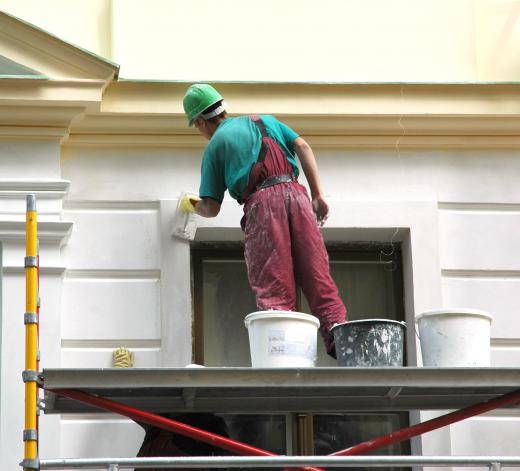A scaffolding clamp is a device used at a joint between pipes on a scaffolding structure to secure those pipes in place. Scaffolding structures are used at construction sites to allow workers to climb up to higher levels safely and securely, and the scaffold is usually made from strong, high-grade metal such as steel. Each steel pipe must be affixed to another to create a sturdy structure, and at every joint, a scaffolding clamp can be used to create an angle or a straight line and tightly secure the components for use.
The size, shape, and function of the scaffolding clamp will vary. Corner clamps are often T-shaped to accept three or more scaffolding pipes, and once the pipes are in place, the scaffolding clamp can be tightened down, usually using a nut and bolt system, to secure each component in place. The overall structure is likely to use numerous clamps at every joint or connecting point. These points are not necessarily always at angles. Two horizontal pipes can be secured to each other using a horizontal scaffolding clamp, for example, and the design of such a clamp will differ significantly from one used at an angle.

Sometimes the scaffolding clamp is designed to swivel. This allows the builders to create custom angles or positions of two or more pipes in relation to each other. Once the pipes are positioned properly, the swivel clamp can be tightened down in that position. Very often these types of hardware are used when cross braces are positioned between vertical pipes, creating an X-shape between the uprights. Other applications for this particular type of clamp exist as well, and the clamp is one of the more versatile pieces of hardware used on the structure.
Most clamps are made from high-quality, hardened steel, though sometimes an aluminum clamp may be used. Steel clamps are much stronger, however, and are less likely to crack or otherwise fail. Nuts and bolts are usually used to secure the components, though wing nut systems and quick-release systems are also available. These two systems make installation and removal of the clamps quick and easy, but special care must be taken to ensure these systems are tightened down properly at installation; otherwise, the joint may fail and the structure may become unstable. Clamps that allow a platform to be secured to the piping are usually tightened only with bolts for added security and safety.
